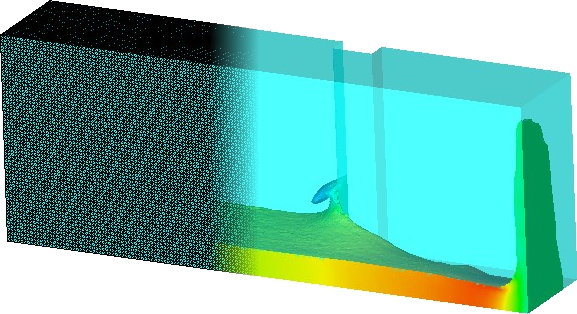A large collection of fluid problems involves moving interfaces. Applications include air-water dynamics, breaking surface waves and solid bodies penetrating in fluids. In many such applications, the interplay between the interface dynamics and the surrounding fluid motion is subtle, with factors such as density ratios and temperature jumps across the interface, surface-tension effects, topological connectivity, and boundary conditions playing significant roles in the dynamics.
The solver uses a level set method, a fast and reliable technique in order to track and correctly represent moving interfaces. they rely on an implicit representation of the interface whose equation of motion is numerically approximated using schemes built from those for hyperbolic-conservation laws. The resulting techniques are able to handle problems in which the speed of the evolving interface may sensitively depend on local properties such as curvature and normal direction, as well as complex physics off the front and internal jump and boundary conditions determined by the interface location.
Level set methods are particularly designed for problems in multiple space dimensions in which the topology of the evolving interface changes during the course of events and for problems in which sharp corners and cusps are present.
